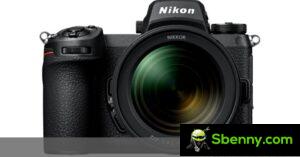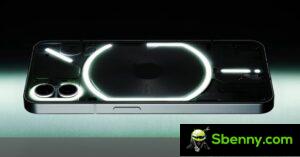The first megapixel rush started around 2004 (when camera phones first broke the 1MP limit) and ended around 2013 with the arrival of the Nokia 808 PureView. Its 41MP camera would only be beaten in terms of resolution in 2018. During that time, phones focused on other aspects of the camera rather than resolution. But now a second megapixel race is upon us.
The former ended in part because common wisdom has shifted from “more pixels are better” to “bigger pixels are better”. The arrival of computational photography also played a big role and allowed the iPhone, Galaxy, and Pixel to maintain 12MP resolution for their primary cameras for several years (in fact, Apple only left 12MP behind).
These days things are back towards “more pixels is better”, albeit not completely: the current trend is actually a mix of the two approaches. We already have phones with 200MP sensors and phones with 1 ”sensors.
We’ll take a closer look at the two branches that have emerged, starting with the “more pixels is better” branch today and leaving the other one for next time.
The second megapixel rush has led to the proliferation of 48MP sensors, which have become quite popular with average rangers (with flagships still preferring larger sensor sizes at higher resolution). Let’s take a look at the 2018 Samsung ISOCELL GM1, for example. It’s not huge in the 1/2 “optical format, but it had 0.8 µm pixels, which grew to quite large 1.6 µm with binning.
Here we have to take a little detour to talk about the Bayer filter. We’ve written a detailed explanation in the past, but Bayer filters – and Quad Bayer and so on – are at the heart of today’s topic. The GM1 sensor used Tetrapixel technology, Samsung’s term for Quad Bayer. It looks like this, four neighboring pixels sharing the same square of the color filter. This makes it natural to combine the four into a single output pixel (4 in 1 binning).
![]()
There are now sensors that cover 3×3 groups and even 4×4 pixel groups with the same color filter, they use 9 in 1 and 16 in 1 binning respectively. The 12MP resolution we talked about earlier hasn’t disappeared: 108MP and 200MP still point to 12MP as final output after binning. This makes for a good default as you get enough resolution to zoom in but you don’t have to juggle photos that take up tens of megabytes of storage.
![]()
Let’s go back to the megapixel race. When high-resolution sensors started to become the standard on mid-range phones, there was a push to keep costs down and that meant only one thing: smaller sensors.
While the GM1 had 0.8 µm pixels, the 2020 48 MP ISOCELL GM5 dropped to 0.7 µm, making it a 1 / 2.55 “sensor. The 2021 JN1 got even smaller with 0 , 64 µm pixels, so despite its high resolution of 50 MP it only had an optical format of 1 / 2.76 ”.
Samsung is not the only one using tiny pixels, for example OmniVisions OV60A is a 60MP, 1 / 2.8 “optical format sensor with 0.61 µm pixels and a Quad Bayer filter. There are also larger sensors. like the 1 / 1.34 ”OV64A, but we’ll talk about those again next time.
Well, we’ve covered pixel sizes and Bayer filters, it’s time to break through the 100MP barrier. The first sensor to go further was the Samsung ISOCELL Bright HMX. Its full resolution was 12,032 x 9,024 px and had 0.8 µm pixels, for an optical format of 1 / 1.33 ”.
![]()
The first phone to use it was the Xiaomi Mi CC9 Pro (it was supposed to be the Mi Mix Alpha, but it has been canceled). You can check out our hands-on review for camera samples. The phone defaults to shooting at a quarter resolution, 27MP, with pixel binning.
Another 108MP 1 / 1.33 ”sensor is the HM3, which also has 0.8 µm pixels and was used in the Galaxy S21 Ultra. However, this performs 9 in 1 binning, with a default resolution of 12 MP. As with the 48MP sensors, things may have started at 0.8 µm, but they quickly started to decline: at 0.7 µm and 108 MP we have products in the caliber of 1 / 1.52 “HM2, so with a resolution of 0.64 µm and 108 MP there is the HM6, a 1 / 1.67 “sensor.
We have already mentioned the JN1, another 0.64µm sensor. As you can probably see, sensors can be grouped based on pixel size. For example, Samsung has built several sensors on its 0.7µm technology:
![]()
Now we come to the 200 MP sensors, Samsung has two: the 1 / 1.22 “HP1 (0.64 µm pixel) and the 1 / 1.4” HP3, which has the smallest pixels that we have ever seen at only 0.56 µm.
OmniVision has a pair of competing sensors. The OVB0B has pixels of 0.61 µm, the OVB0A corresponds to the HP3 at 1 / 1.4 ”and 0.56 µm.
200 MP is the maximum of current smartphone cameras. However, Samsung is rumored to be working on sensors with a resolution of up to 600MP, so this isn’t the end of the road.
Before we wrap up, we should quickly review the benefits of having so many pixels. The first is obvious, to brag. We know marketing departments love it, especially when they can slap a “Primo!” label on it.
But there are also practical advantages. Digital zoom has benefited greatly: sensors using pixel binning can usually perform lossless digital zoom with the same factor (e.g. 2×2 pixel binning and 2x zoom). Even when forced to do the interpolation, the final result is better because there are more pixels to work with.
Without a motorized lens this is the only way to achieve smooth zoom (e.g. in videos). Motorized zoom lenses small enough for modern smartphones are already on the market, although they are extremely rare.
Another interesting use for high resolution sensors is to treat them as two or even separate sensors. For example, half of the pixels can shoot at low ISO and the other half at high ISO, which can then be combined into a single image with detail in both light and dark areas. Offset HDR does a similar trick, except that it varies the exposure time (low, medium, and high).
![]()
Double ISO
![]()
Offset HDR
That’s it for today, next time we will look into the other branch and follow the growth of smartphone image sensors up to the 1 “mark. We had 1” cameras before, but the Panasonic CM1 also does the ultra slim Xiaomi 12S Look .







Start a new Thread